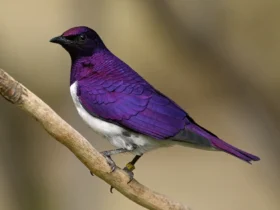Within the lush and vibrant landscapes of the Amazon rainforest, the Amazon Kingfisher (Chloroceryle amazona) emerges as a captivating and colorful avian presence. With its striking appearance, aquatic lifestyle, and vital role in the rainforest ecosystem, this bird represents both the beauty and intricacy of one of the world’s most diverse and complex habitats. In this article, we explore the captivating world of the Amazon Kingfisher, delving into its characteristics, behaviors, habitat, and its significance within the Amazon rainforest.
Amazon Kingfisher images
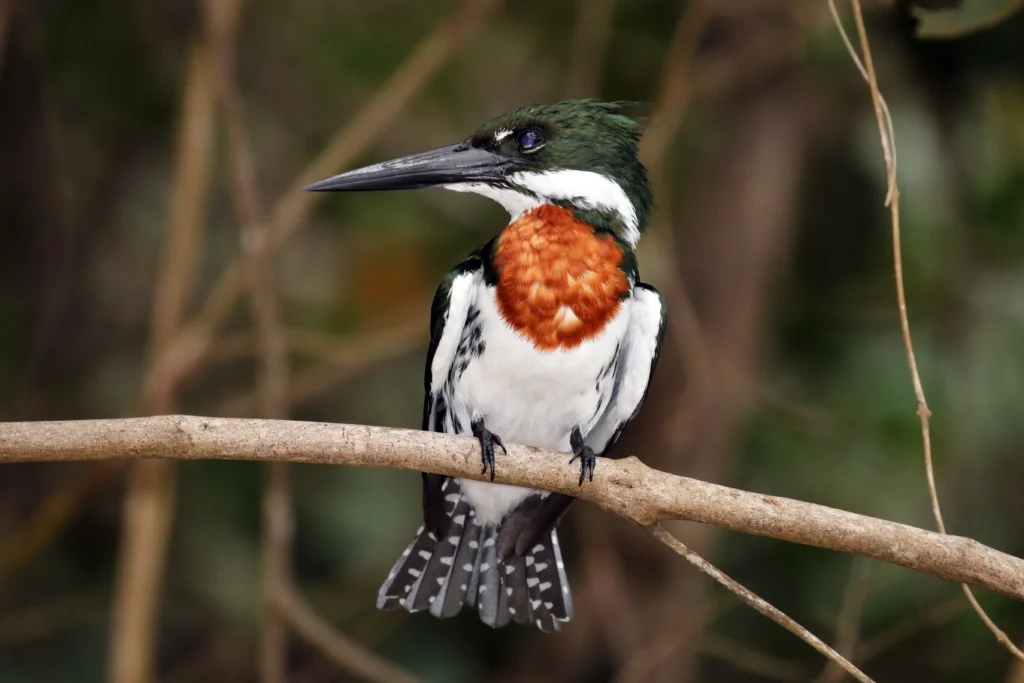
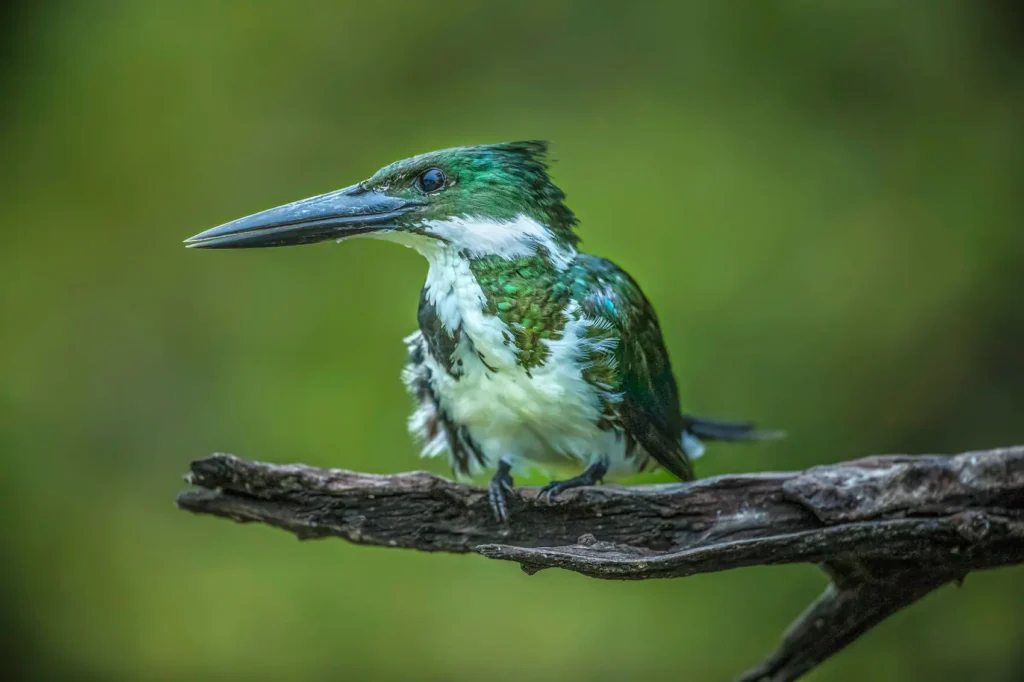
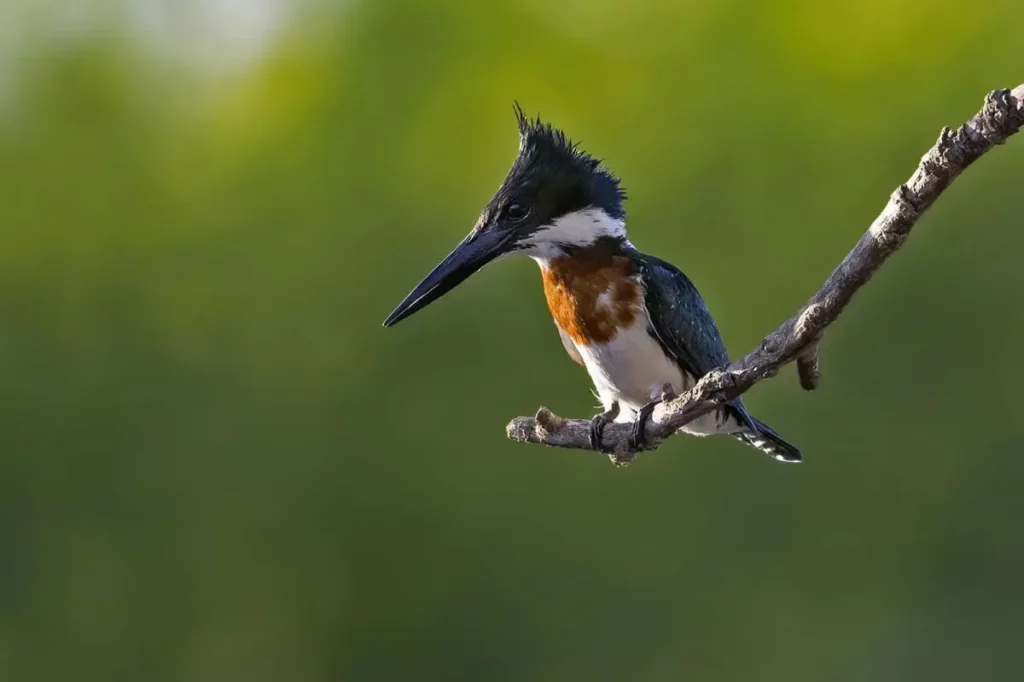
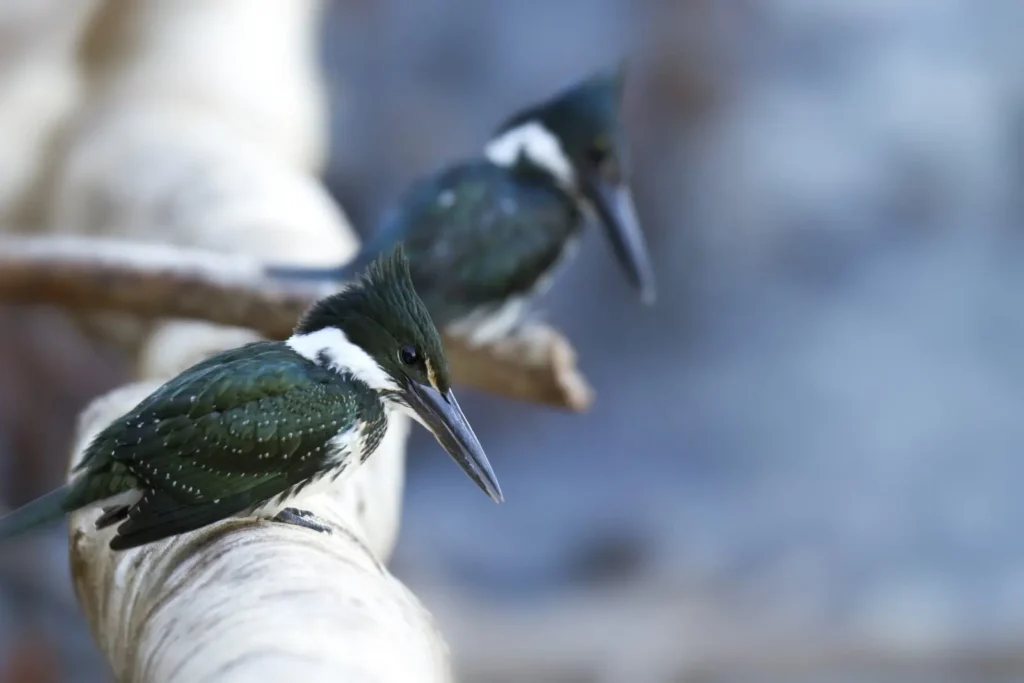
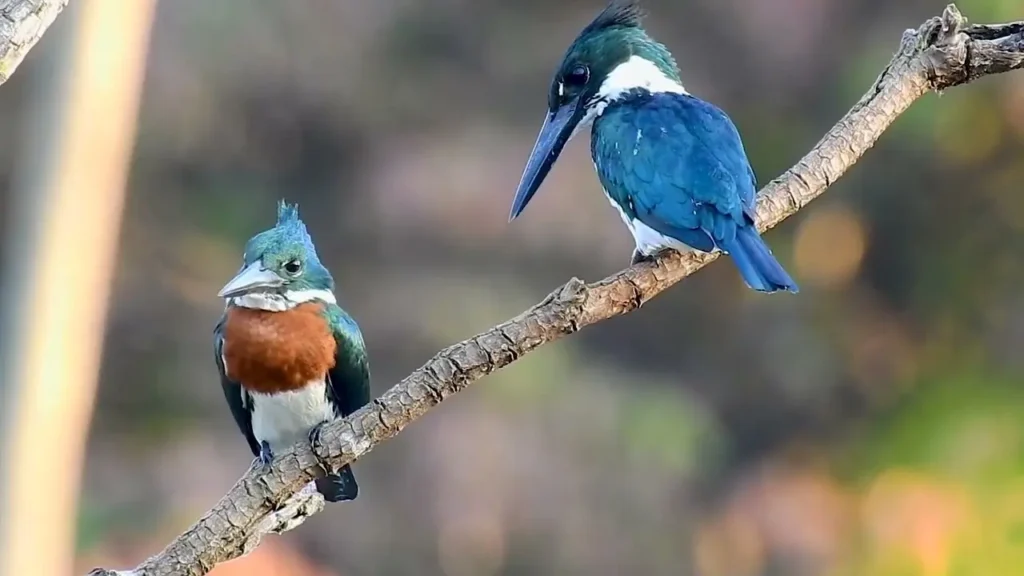
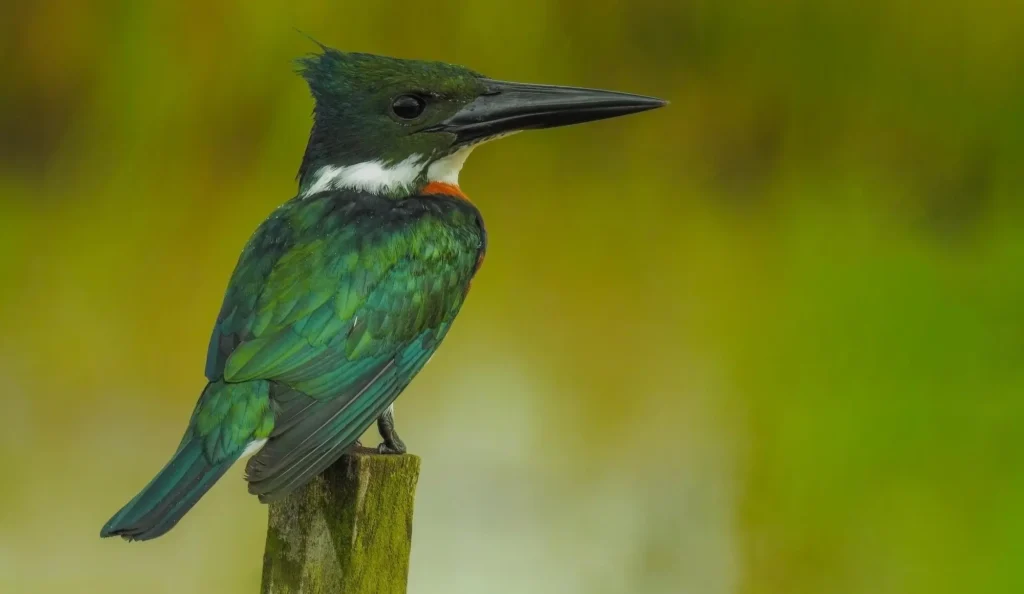
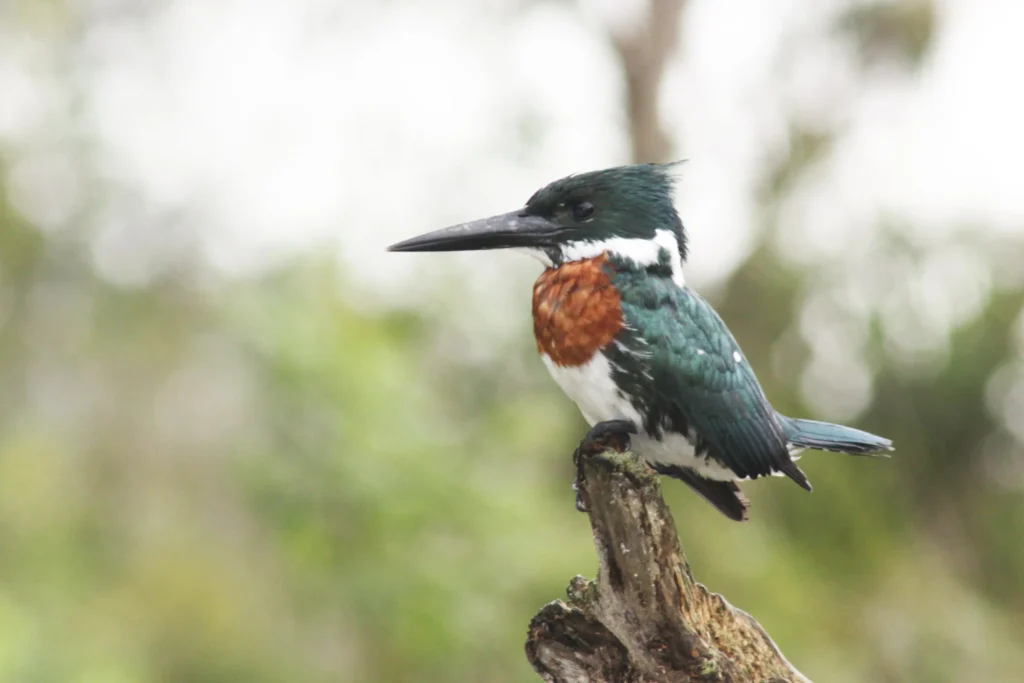
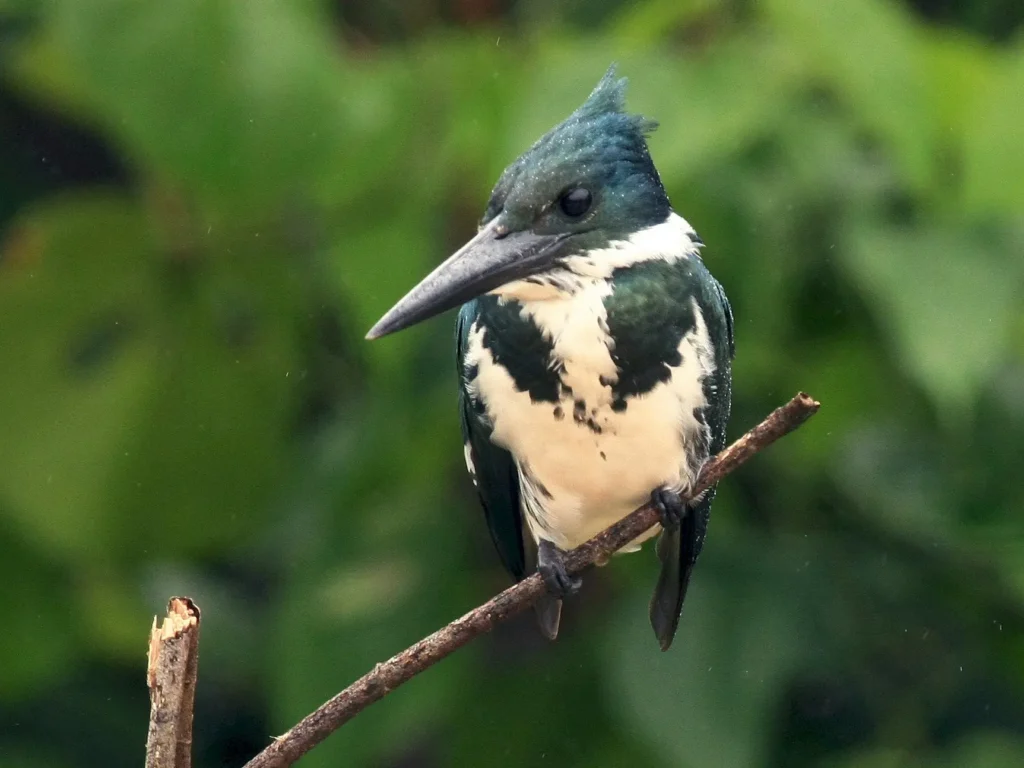
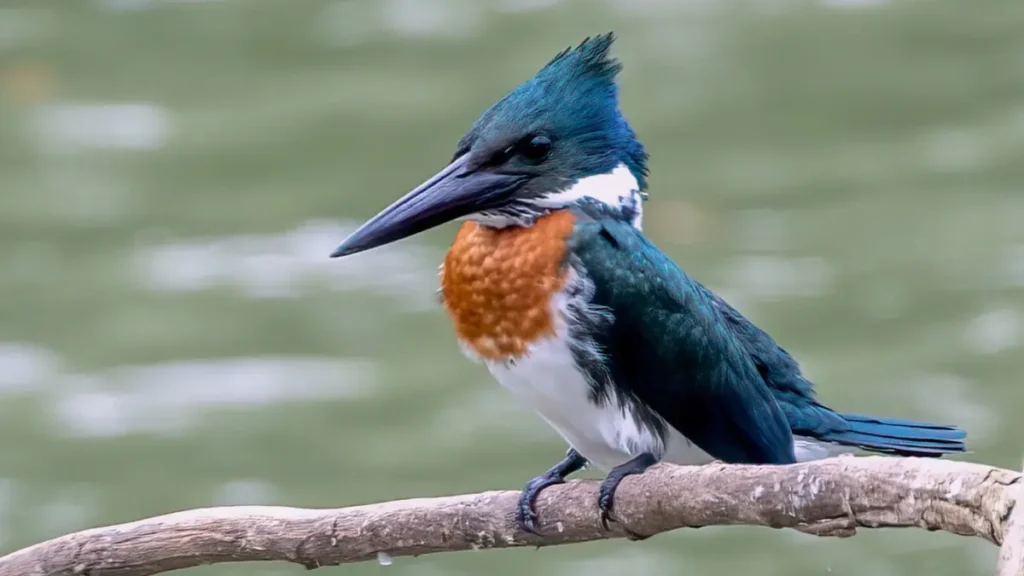
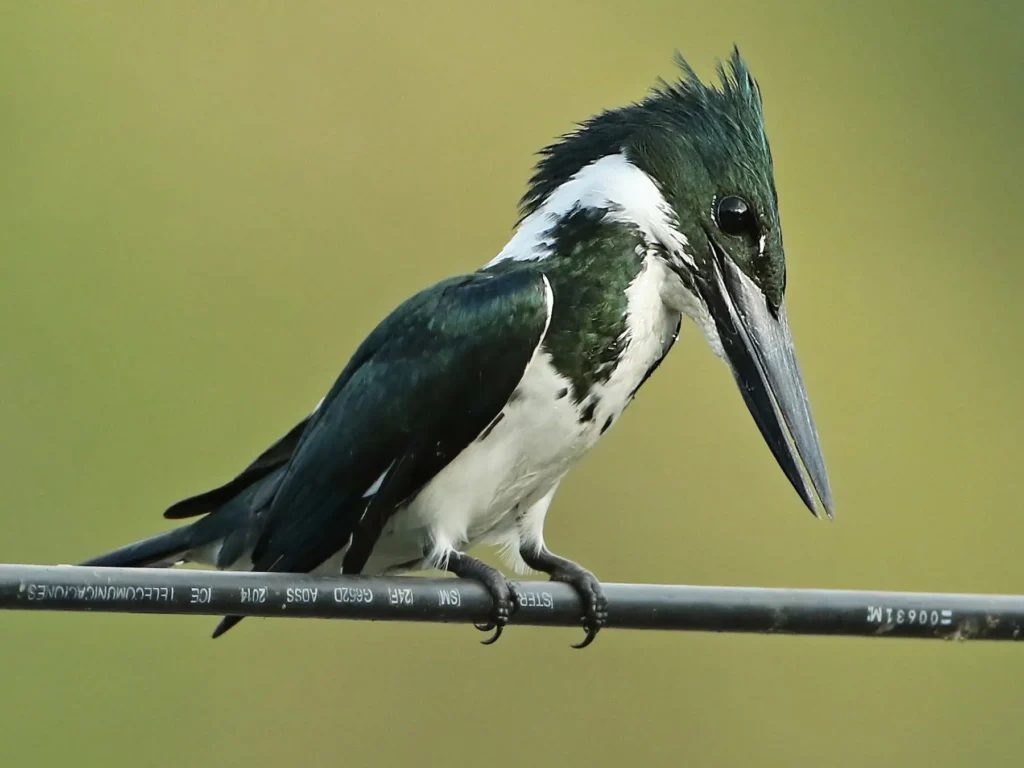
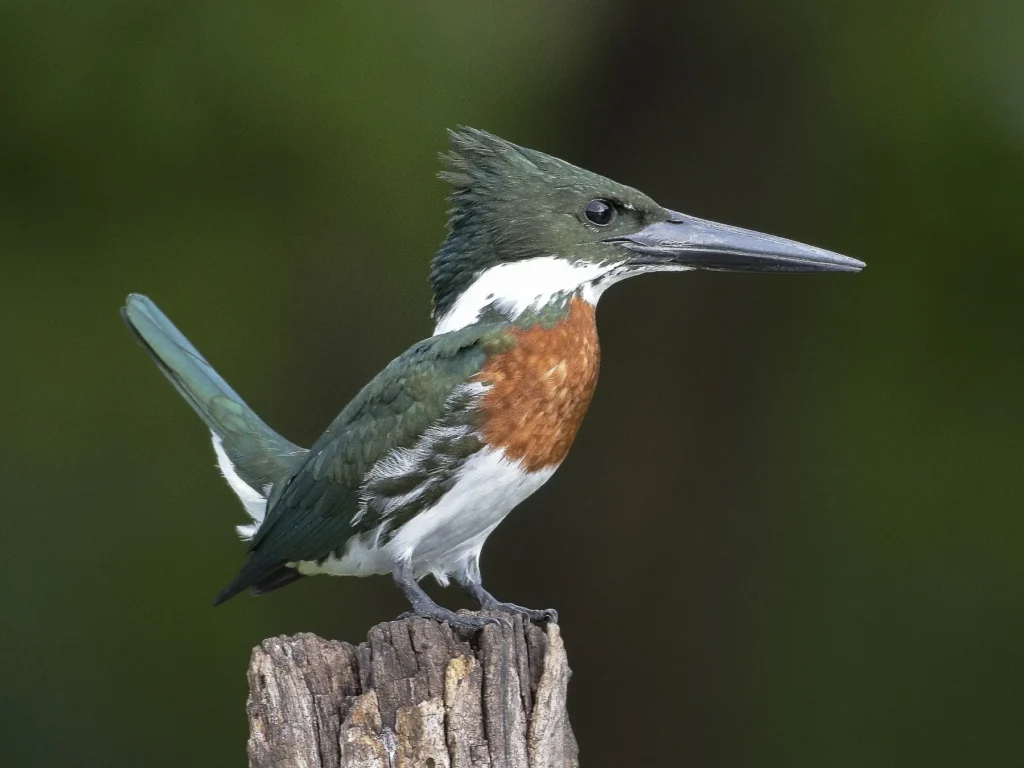
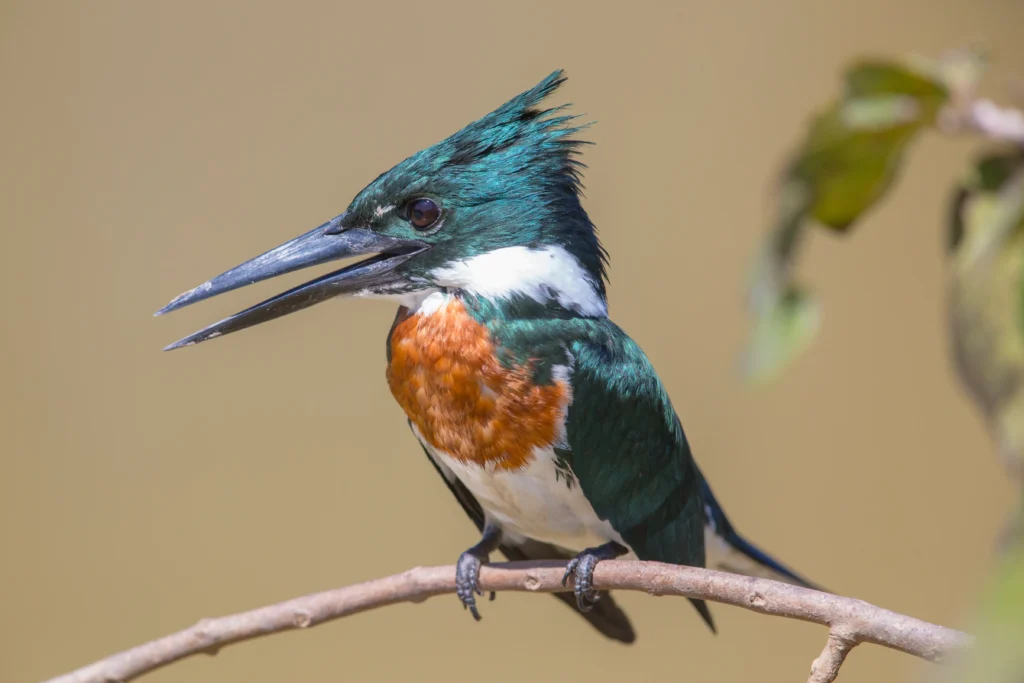
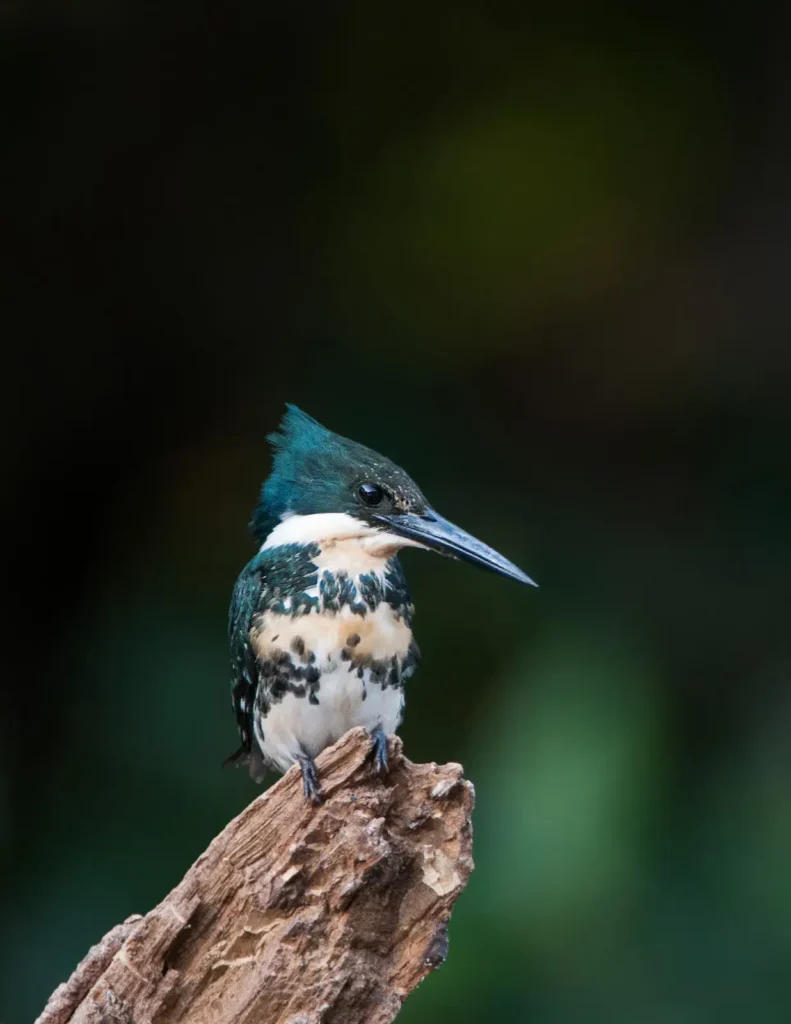
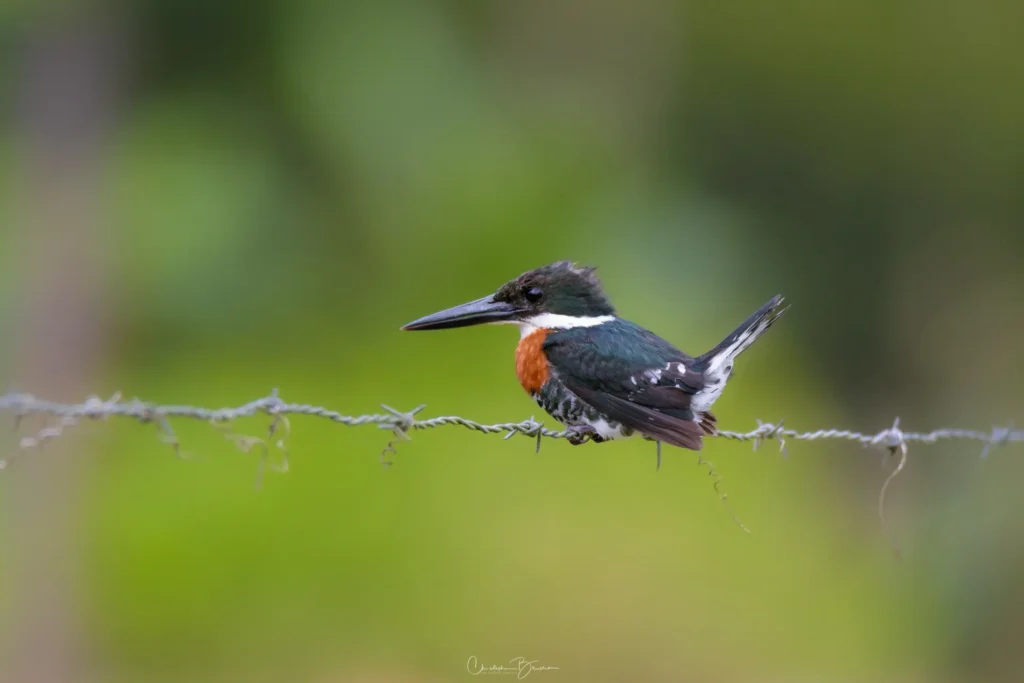
Appearance and Characteristics
The Amazon Kingfisher is a medium-sized bird renowned for its dazzling colors and distinctive features. Its plumage showcases a vibrant blend of deep turquoise, emerald green, and brilliant white. The upperparts of the bird are predominantly green, while its underparts display shades of blue and white. The contrast between these vibrant hues creates a striking visual impact.
The kingfisher’s long bill, designed for catching aquatic prey, is a prominent feature. It is adapted for capturing fish, insects, and other small creatures that inhabit the waterways of the Amazon rainforest. Its sturdy build, sharp bill, and keen eyesight make it a skilled and efficient hunter.
Hunting and Feeding Behaviors
As its name suggests, the Amazon Kingfisher is an adept fisherman. It frequents the water’s edge, perching on branches, logs, or other elevated positions that provide a clear view of the water below. With remarkable precision, the kingfisher dives into the water to capture its prey, often emerging with a wriggling fish or aquatic insect clutched firmly in its bill.
The kingfisher’s keen hunting skills play a crucial role in maintaining the balance of the Amazon rainforest ecosystem. By controlling the populations of aquatic creatures, it contributes to the intricate web of life that sustains the entire habitat.
Habitat and Range
Unsurprisingly, the Amazon Kingfisher calls the Amazon rainforest its home. It thrives in the lush, wet environments of rivers, streams, oxbow lakes, and other water bodies that are abundant within the rainforest ecosystem. Its range spans across various countries in South America, including Brazil, Colombia, Peru, and Venezuela.
Cultural and Ecological Significance
The Amazon Kingfisher holds cultural significance in the regions where it resides. Its vibrant colors and striking appearance have led to its inclusion in local folklore and traditions. Additionally, the kingfisher’s role as a predator in aquatic ecosystems contributes to maintaining a healthy balance among species and preventing overpopulation of certain aquatic creatures.
Conservation and Challenges
The Amazon rainforest faces numerous challenges, including deforestation, habitat loss, and the impacts of climate change. While the Amazon Kingfisher’s populations are currently stable, its habitat is vulnerable to these threats. Protecting the rainforest and the delicate balance of its ecosystems is crucial for ensuring the survival of the Amazon Kingfisher and countless other species that call this remarkable habitat home.
The Amazon Kingfisher, with its resplendent colors and vital role in the rainforest’s aquatic realms, offers a glimpse into the intricacies of one of the world’s most biodiverse ecosystems. Its presence symbolizes the fragile interconnectedness of life within the Amazon rainforest. By celebrating and preserving the habitat of the Amazon Kingfisher, we contribute to the conservation of not only this captivating bird but also the entire tapestry of life that thrives in this awe-inspiring natural wonder.
